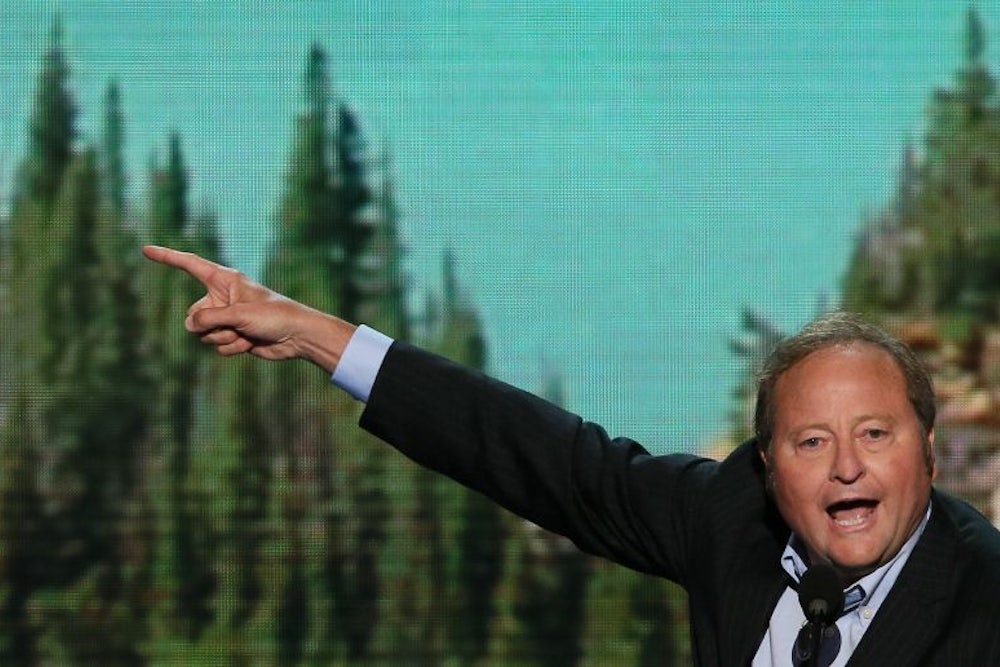A major theme of American politics in the years since 2008 has been how voters react to a grim economy. Of course, that theme doesn’t apply everywhere. One swath of the country that has experienced good times: The chunks of North Dakota and eastern Montana that have witnessed a shale oil boom.
So how do these happy circumstances affect politics? It’s easy to conjure up theories: Maybe the absence of ambient economic worry led to the surprise victories of Democrats Heidi Heitkamp and Jon Tester in North Dakota and Montana last year. Or maybe the shale activity will lure in the sort of energy-industry workers who will fill the voter rolls with new Republicans. The question has practical implications, too, since Max Baucus’ retirement this week means there will likely be a competitive election in the Big Sky state in 2014, especially if Democratic former governor Brian Schweitzer runs for the job.
Even in small states, though, the dynamism of a boom doesn’t much change the political calculus. Towns are emerging out of nowhere and that rightfully gives the impression of rapid growth, but the number of new residents isn’t nearly as significant as the percentage change in population. Williston, North Dakota was the fastest growing small city in the country, but its 8.8 percent growth between April 2010 and July 2011 didn’t even equal 2,000 new residents. On the other side of the state, Fargo’s Cass County only grew by about 2 percent over the same period, but because of the county’s larger population, that translated into more than 10,000 new residents. In Montana, beautiful mountain towns like Kalispell and Bozeman are growing at a faster pace than the handful of sparsely populated shale counties along the eastern border with North Dakota.
In other words, explosive growth hasn’t yielded enough new residents to change the composition of the electorate. In North Dakota, the counties producing more than .1 bn barrels of oil per year added just 3,135 voters between 2004 and 2012, increasing their share of the North Dakota electorate from 10.7 percent to 11.4 percent over the same time period. That type of shift could only swing the closest of elections.
In fact, the biggest political shift might not be the region’s population growth, but the attitudinal shift accompanying a transformation of the region’s economy. In 2004, the shale counties gave John Kerry a respectable 31 percent of the vote—or about 17 points fewer than his 48 percent share of the national popular vote. Eight years later, only 27 percent of the region’s voters supported Obama—24 points fewer than the 51 percent he won nationally. North Dakota’s rightward lurch stands out on the electoral map: outside of the white stretches of the cultural South, greater Utah, and coal country, few areas have moved more toward the right since 2000.
Part of the shift might just be new Republican-leaning voters, perhaps from conservative states with vibrant energy sectors, like Texas or Oklahoma. But Obama actually won fewer votes than Kerry despite higher turnout, suggesting that long-time residents might have also shifted against Democrats. While this might seem surprising if one expected strong economic growth to help the president, the likely explanation is that the president was perceived as hostile to the interests of shale gas and regional growth—hardly surprising after the Keystone pipeline decision. Still, even the combination of the region’s rightward shift and a growing population hasn’t hurt Democrats too much: in 2004, Kerry lost the shale region by 12,078 votes, while Obama lost it by 16,023 votes eight years later. In a small state like North Dakota where Democrats only possess a narrow route to victory, 4,000 votes can be significant.
All the same, the shale region’s rightward lurch didn’t prevent Heidi Heitkamp from winning an open Senate seat last November, nor did it prevent Obama from doing better than Kerry statewide. In Montana, where the shale boom hasn’t added nearly so many residents, the electoral consequences of shale have been imperceptible. Schweitzer has nothing to worry about.
